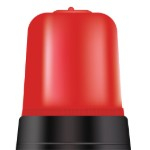
In the heart of industrial settings, where heavy machinery and hazardous materials reign, safety is paramount. The well-being of employees is not just a moral obligation but a legal requirement. The use of appropriate safety products can significantly reduce the risk of accidents, injuries, and fatalities.
In this blog post, we'll delve into the importance of safety products in industrial environments and explore some essential items to consider.
Why Safety Products Matter
Safety products are designed to mitigate risks and prevent accidents. From hard hats and safety glasses to protective gloves and footwear, these tools act as barriers between employees and potential hazards.
Safety products are the unsung heroes of industrial environments, diligently working behind the scenes to mitigate risks and prevent accidents. From the familiar hard hats and safety glasses to the more specialized industrial components like safety light curtains, relays, and emergency stop buttons, these tools act as barriers between employees and potential hazards.
Beyond protecting human life, safety products also safeguard valuable industrial equipment. By preventing electrical failures and mechanical malfunctions, they help to minimize downtime and ensure the smooth operation of production processes.
Many industries are subject to stringent safety regulations, and adhering to these regulations is not merely a legal obligation but a demonstration of a commitment to employee well-being. Safety products play a pivotal role in ensuring compliance with these standards.
Key Safety Components
In the industrial setting, safety is a top priority and advanced safety devices play a crucial role in preventing accidents and injuries.
Non-contact safety solutions, such as safety laser scanners and light curtains, leverage advanced sensor technology to enhance safety, particularly in hazardous zones. Safety light curtain devices, for example, utilize infrared beams to create an invisible barrier; the immediate halting of machinery, when these beams are interrupted, prevents accidents. These curtains are particularly valuable in areas where workers and machinery interact closely, such as assembly lines and robotic workstations.
Safety relays are another critical component of safety systems. They monitor and control safety circuits, ensuring the proper functioning of emergency stop buttons, safety sensors, and interlocks. By continuously monitoring these devices, safety relays help to prevent accidents and injuries by quickly identifying and responding to potential hazards.
Emergency stop buttons, akin to red panic buttons, provide a quick and essential way to halt machinery in an emergency. It is crucial to ensure that these buttons are easily accessible to all workers and that their function is regularly tested.
Warning signs, prominently displayed and using appropriate symbols and language, serve as a visual alarm system, alerting workers to potential hazards. Regular inspection and replacement of damaged or faded signs ensure that workers remain aware of potential dangers.
A well-designed control panel is more than just a collection of buttons and switches; it's the command center of safety operations. It should provide operators with clear instructions and easy access to essential controls, contributing to accident prevention by reducing confusion and errors.Safety controllers function as central processing units for safety systems, evaluating input data from various safety devices and executing safety protocols to mitigate risks and maintain compliance.

Industrial lighting and sounders, by providing clear visibility and audible warnings, play a crucial role in enhancing workplace safety. Effective illumination of work areas reduces the risk of errors and fatigue, while audible alarms alert workers to potential hazards, allowing them to take immediate action to protect themselves.
Safety trapped keys are a crucial safety measure to prevent accidental startup of machinery and unauthorized access, significantly enhancing workplace safety and reducing the likelihood of injuries and equipment damage. Interlocks are essential safety devices that prevent unauthorized access to hazardous areas or machinery and ensure specific safety conditions are met before a machine can start operating.

By implementing these key safety components, you can create a safer and more productive workplace. Remember, safety is not just a compliance issue; it's a commitment to protecting your workers and preserving your business.
In the intricate landscape of industrial operations, safety products stand as the cornerstones of a secure and productive environment. Beyond their primary role of safeguarding human lives, these essential tools also preserve the integrity of machinery, minimizing downtime and ensuring efficient operations.
Interested in learning more about essential safety products for your industrial application? Check out our comprehensive guide here >>>



